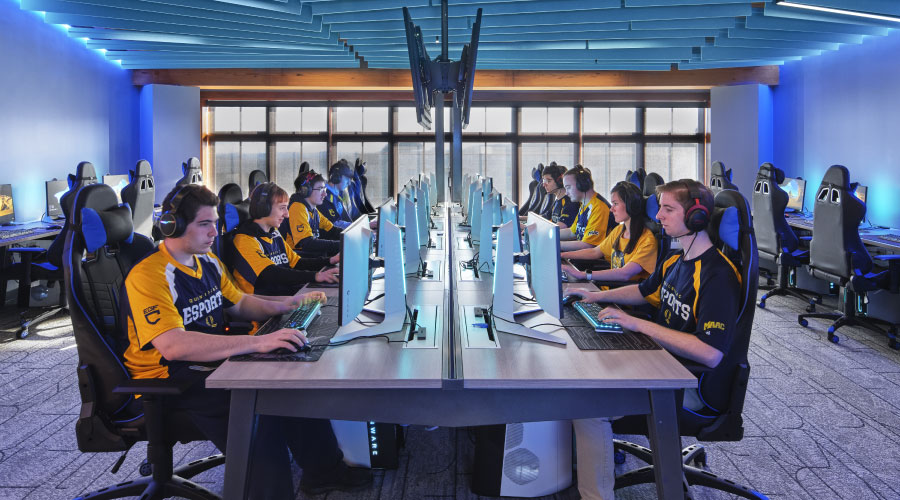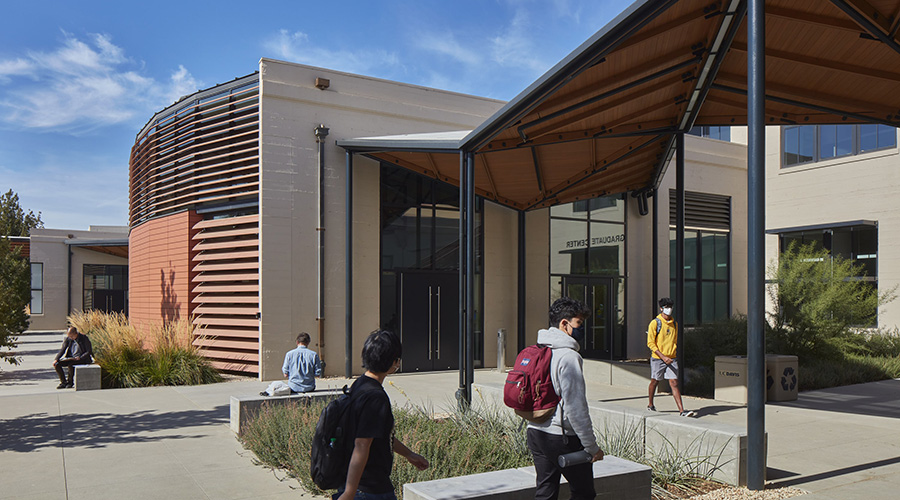Stairwells, Hallways Other Sources of LED Installations
Prior to the retrofits of parking structures and lots, the department completed several installations of LED lighting in classrooms, hallways, libraries, and food-service areas that served as both testing grounds for technology and education opportunities for occupants.
"LED lighting has been received really well," Phillips says. "Initially, we had to do a lot of testing and get quite a few samples in order to show people what opportunities are available and what the different colors are. A lot of people have different opinions about whether it's the best technology to go to.
"Initially, we had a lot of extra legwork to move it forward in all of those areas. It was educating people on the technology. In most of those areas, we work with dimming, where the lighting is
actually controllable.
"The LEDs are not to the point where you can just take one off the shelf and put it with any dimmer. You have to make sure they're compatible."
The retrofits have begun to pay off.
"We have saved $120,000 in other lighting retrofits to LEDs on campus in the last two years and $110,000 in retrofits of T-12 and other HID systems to energy-efficient fluorescent technologies," Phillips says.
The next phase of LED retrofits also targets areas with minimal occupancy and continual lighting needs.
"We're currently going across campus and totally retrofitting all of our stairwell lights from fluorescents to LEDs," she says. "We find that's another great opportunity to take advantage of savings with LEDs because stairwells are primarily unoccupied, but the lights are always on."
Related Topics:















